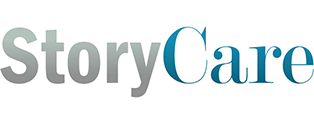Contributed by Duncan Kennedy
To some, the notion of using “story” or the act of “storytelling” as a tool for organizational change may seem new or even novel. But humankind has been using stories to communicate within and across organizations for thousands of years. In many ways, “story” is the original tool of transformation.
Think back to the earliest form of organizational identity – the tribe. After departing Egypt, Moses delegated authority to the elders of the Israelites to listen to disputes, creating a hierarchy that ultimately reported back to him, creating what is probably the earliest known example of an organization. Looking closer to home, the native peoples who inhabited this continent prior to the arrival of Europeans had a rich tradition of using stories to impart knowledge across the generations for the ongoing benefit and sustainment of the group – where and at what time of year were the best hunting grounds, how was the best way to track and capture prey, how to safely clean and prepare meals, and even what other groups to give a wide berth to avoid trouble. Story was how chieftains, shamans, lead hunters, and matriarchs shared the established understandings of the tribe, introduced new ideas and discoveries, and taught younger members how to behave properly and contribute quickly.
What’s interesting about this is that for many generations, it was done without the benefit of formal language. It was acted out in dance and pantomime as important rituals that codified tribal knowledge, valuable experience, and mutual understanding. Clans also used artistic depictions and symbols to represent their most valued experiences and learning. With the advent of oral communication and language, story remained the constant modality for expressing concepts and behaviors. And we must be reminded that only recently in human history did the use of symbols and characters evolve to record experiences on tablets and parchment, creating a permanent record that was not as vulnerable to extinction as is the oral tradition.
With the introduction of industry, modern technology, and now a climate of constant information, “story” has fallen behind the times in the eyes of some. Yet all we need do is sit through an excruciating PowerPoint presentation to recognize how meager contemporary communication tools are in comparison to the ways that stories engage us. The power of story is that it cuts across all manner of format, lexicon, and complexity. Everyone can tell, listen to, and understand a story. It is a universal trait of humanity. We do it every day. We do it with friends and family. We do it with colleagues and peers. We do it with children and students. Some of us may be more confident at it than others. Some of us may be more entertaining than others. But the ability to both share and experience a story are like core programs written deeply into the subroutine of our specie’s mental functioning. There is significant research to point to the fact that we have narrative schemas in our mind that predispose us to seek out and attend to “storied” information. Once information becomes more didactic and linear, our minds are wont to wander. Moreover, a growing body of research points to the fact that our capacity for storytelling is literally encoded in our DNA.
All you need to do is start telling a story to someone from another culture to see how it immediately cuts across differences in language, ethos, and traditions, immediately forming a bond between the teller and the listener. In fact, powerful stories can tear down the barriers to understanding that frequently alienate and separate us, creating the ground for rapprochement and healing among peoples who have long histories of vilifying each other, creating new possibilities for collaboration, transforming hatred into understanding.
